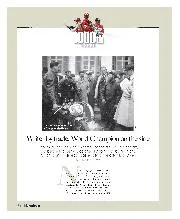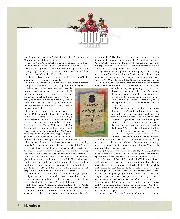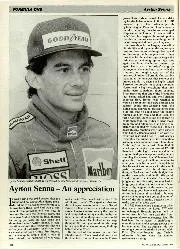On another occasion a well-known character who successfully raced saloon cars decided he wanted a Siddeley Special and sent his lads to obtain one that was for sale. When he saw it he realised it was a saloon and he had wanted an open tourer, so he asked me if I would like it. Jenks made use of it when he was in this country but because we had no proper storage for it told me he had heard of an Armstrong-Siddeley enthusiast who would look after it. I went to see it depart and that was the last I ever heard of it.
When dragsters arrived here and Sydney Allard built an impressive one, the stub exhausts of which set fire to the straw bales at the start of the Brighton speed trials, Jenks had to have a go in a less powerful dragster.
There was the Christmas when I was invited to go with DSJ to his parents’ place for the holiday. For the long journey to Catford he was fixing the sidecar I was to ride in to a firmly secured plank on the sidecar chassis with a few nails. It occurred to me that if the front nail came out I would hit my head on the road, so I held onto the right-hand chassis tube, to DSJ’s vocal disgust. The first part of the journey was over local roads to which DSJ should have been accustomed. But at the first corner the outfit went sidecar-over-Norton, and at the next corner it went bike-on-top-of-sidecar. And Jenks had been passenger to the World Sidecar Champion Eric Oliver…

Giving a DFV the once over
Bernard Cahier/Getty Images
DSJ kept one of his racing bikes at his parents’ home and when he opened it up on Christmas Day windows opened along the row of suburban houses opposite as irate occupants complained of the noise, no doubt wanting to listen to the Royal speech. I thought we were expected to stay for Boxing Day but DSJ thought otherwise, so we returned to Farnborough.
One day some of us were gathered together near Pondtail canal in Fleet when a soldier arrived to show us his brand-new motorcycle. Jenks asked to ride it and set off towards Aldershot, the soldier a bit askance at the sound of ever-rising revs. We heard DSJ turn round and heard him storming back, when there was a thud, and silence. He had misjudged the bend to the canal bridge and collided with it. I expect the bent railings can be seen today. We ran to the scene of the accident, and a lady appeared and said she would phone for a doctor. “No need,” said Holly Birkett. “I’m a vet. I’ll deal with it.” As he spoke he lifted Jenks up and took him inside. The soldier had to wheel his machine home on its back wheel, while we spent the rest of the day fishing for DSJ’s glasses which had fallen into the canal.










